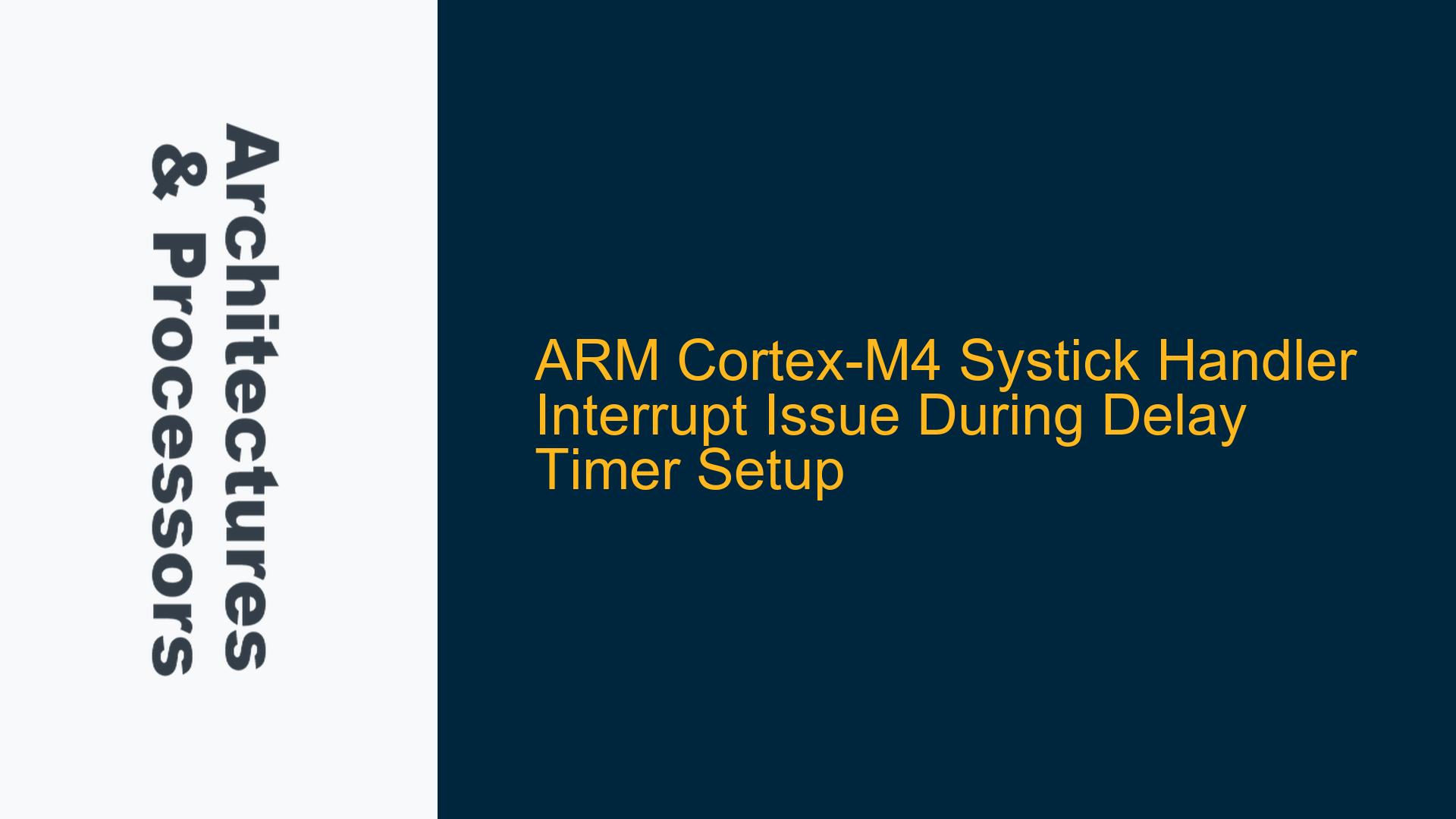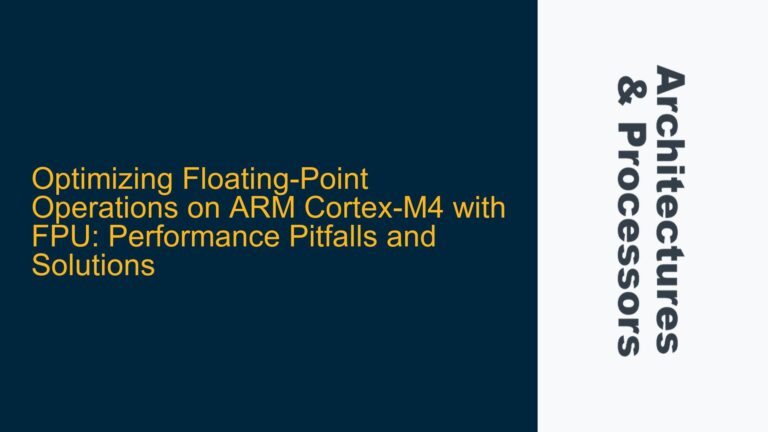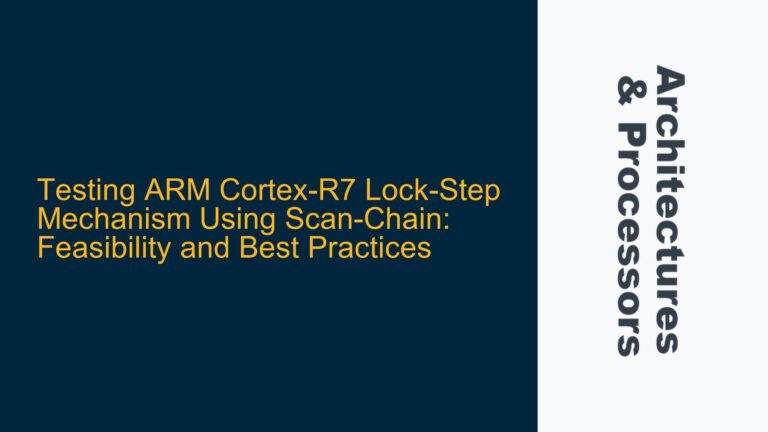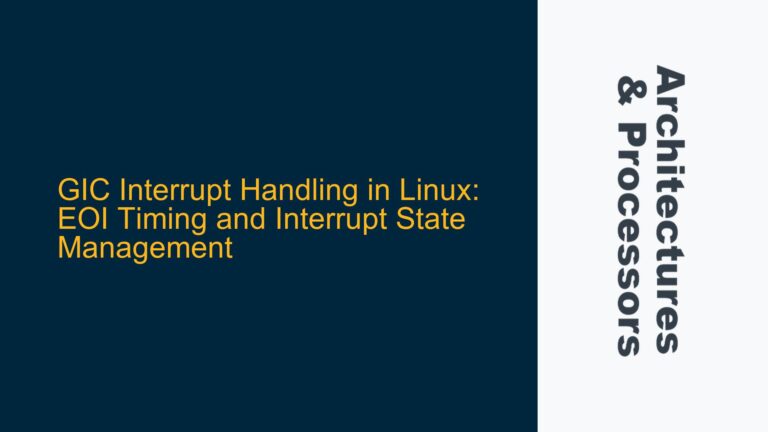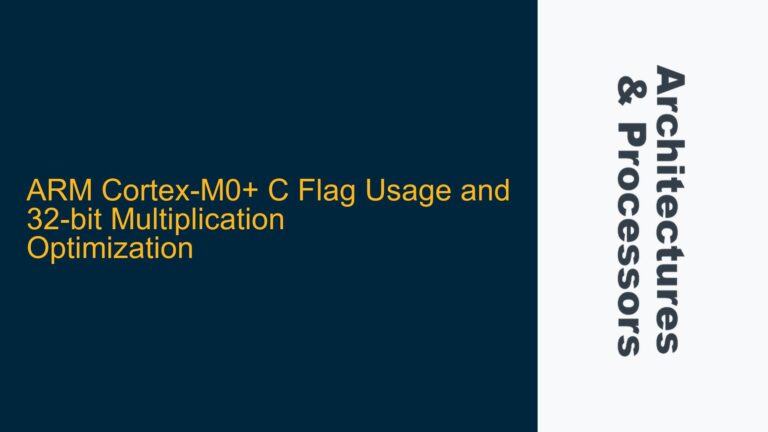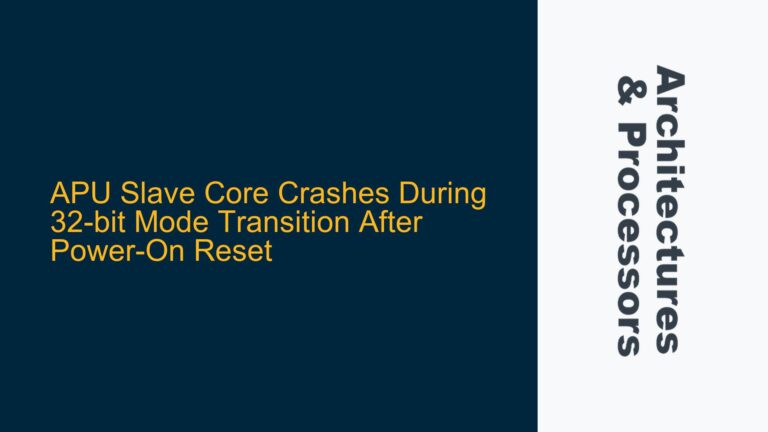Systick Handler Triggered Due to Missing or Incorrect Systick ISR Implementation
The core issue revolves around the Systick handler being triggered unexpectedly during the setup of a delay timer on an STM32F407 Discovery board. The user is attempting to create a simple blinking LED program but encounters a Systick_Handler interrupt, which indicates a problem with the Systick timer configuration or its associated Interrupt Service Routine (ISR). The Systick timer is a critical component in ARM Cortex-M microcontrollers, often used for generating precise delays and managing time-based tasks. When the Systick timer reaches zero, it generates an interrupt, and the microcontroller jumps to the Systick_Handler ISR. If this ISR is not properly implemented or if the Systick timer is misconfigured, the system will default to an infinite loop or undefined behavior, leading to the observed issue.
The user’s code initializes the Systick timer using the SysTick_Config(SystemCoreClock / 100) function, which sets the Systick timer to generate an interrupt every 10 milliseconds (assuming a SystemCoreClock of 168 MHz). However, the Systick interrupt is not being handled correctly, causing the system to enter the default Systick_Handler. This is a common issue for beginners who are unfamiliar with the ARM Cortex-M interrupt handling mechanism and the role of the Systick timer in the HAL (Hardware Abstraction Layer) library.
Misconfigured Systick Timer and Missing HAL_SYSTICK_Callback Implementation
The root cause of the issue lies in the interaction between the Systick timer configuration and the HAL library’s expectations for interrupt handling. The HAL library, which is widely used in STM32 development, relies on the Systick timer for its HAL_Delay() function. The HAL_Delay() function uses the Systick timer to count milliseconds and requires the Systick interrupt to be properly configured and handled. Specifically, the HAL library expects the user to implement the HAL_SYSTICK_Callback() function, which is called from the Systick ISR to update the HAL tick counter. If this callback is not implemented, the system will not function as intended.
Additionally, the user’s code sets the Systick timer to generate an interrupt every 10 milliseconds using SysTick_Config(SystemCoreClock / 100). This configuration is unnecessary for the HAL_Delay() function, which already configures the Systick timer to generate an interrupt every 1 millisecond. Overwriting this configuration can lead to unexpected behavior, especially if the Systick ISR is not properly implemented. The HAL library initializes the Systick timer during the HAL_Init() function call, and modifying this configuration without understanding the implications can cause issues.
Another potential cause is the incorrect initialization of the system clock. The user’s code includes a SystemClock_Config() function, which configures the PLL (Phase-Locked Loop) and sets the system clock to 168 MHz. While this configuration appears correct, any deviation from the expected clock settings can affect the timing of the Systick timer and other peripherals. For example, if the system clock is not running at the expected frequency, the Systick timer will not generate interrupts at the correct intervals, leading to timing issues.
Properly Configuring Systick Timer and Implementing HAL_SYSTICK_Callback
To resolve the issue, the user must ensure that the Systick timer is properly configured and that the necessary ISR and callback functions are implemented. The following steps outline the troubleshooting process and provide a solution to the problem:
-
Remove Unnecessary Systick Configuration: The user should remove the
SysTick_Config(SystemCoreClock / 100)line from the code. This configuration is redundant because the HAL library already configures the Systick timer during theHAL_Init()function call. The HAL library sets the Systick timer to generate an interrupt every 1 millisecond, which is the correct configuration for theHAL_Delay()function. -
Implement the HAL_SYSTICK_Callback Function: The user must implement the
HAL_SYSTICK_Callback()function to update the HAL tick counter. This function is called from the Systick ISR and is essential for the proper functioning of theHAL_Delay()function. The following code demonstrates how to implement this function:void HAL_SYSTICK_Callback(void) { HAL_IncTick(); }This function increments the HAL tick counter, which is used by the
HAL_Delay()function to count milliseconds. -
Verify System Clock Configuration: The user should verify that the system clock is configured correctly and running at the expected frequency. The
SystemClock_Config()function in the user’s code appears to be correct, but it is important to double-check the clock settings. The following table summarizes the expected clock configuration for the STM32F407 microcontroller:Parameter Value HSE Frequency 8 MHz PLLM 8 PLLN 336 PLLP 2 PLLQ 7 System Clock (SYSCLK) 168 MHz AHB Prescaler 1 APB1 Prescaler 4 APB2 Prescaler 2 The user should ensure that the
SystemCoreClockvariable is updated correctly after configuring the system clock. This variable is used by the HAL library to calculate timing-related parameters. -
Check for Other Interrupts: The user should ensure that no other interrupts are interfering with the Systick timer. For example, if a higher-priority interrupt is blocking the Systick ISR, the
HAL_Delay()function will not work correctly. The user can check the interrupt priorities using theNVIC_SetPriority()function and ensure that the Systick interrupt has the appropriate priority. -
Debugging and Testing: The user should test the modified code and verify that the Systick handler is no longer being triggered unexpectedly. The LED blinking program should function as intended, with the LEDs toggling every second. If the issue persists, the user can use a debugger to step through the code and inspect the values of the
SystemCoreClock,HAL_Tick, and other relevant variables.
By following these steps, the user can resolve the Systick handler issue and ensure that the delay timer functions correctly. Properly configuring the Systick timer and implementing the necessary ISR and callback functions are essential for reliable operation of the STM32F407 microcontroller and the HAL library. This troubleshooting guide provides a comprehensive solution to the problem and highlights the importance of understanding the underlying hardware-software interactions in embedded systems development.
